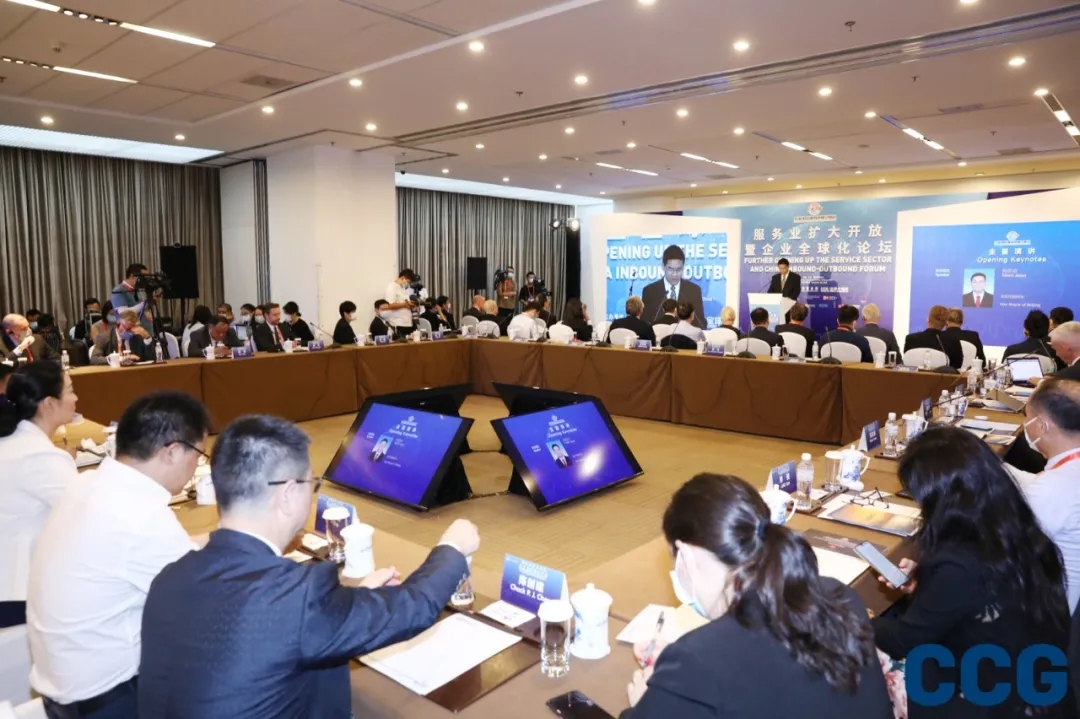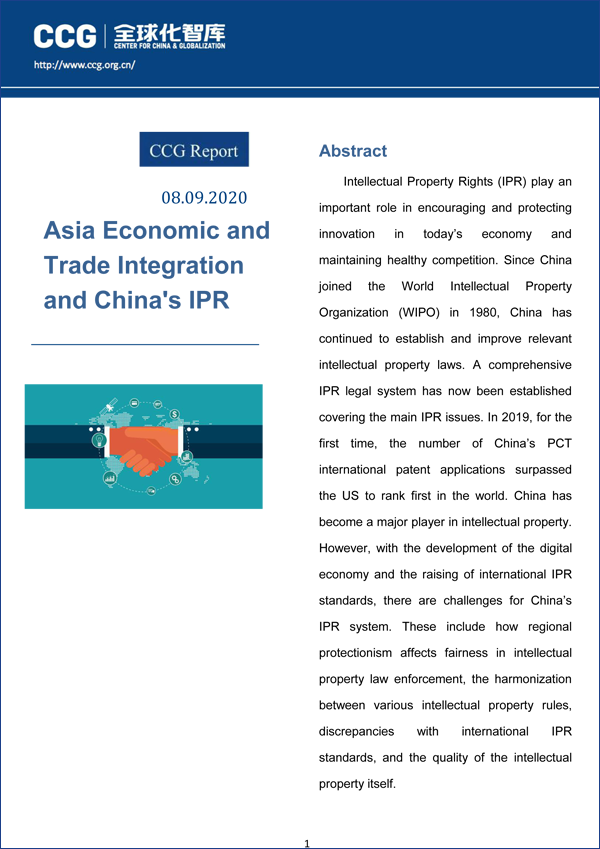CCG releases report on CPTPP and China’s IPR
September 08 , 2020
On September 8, 2020, the Center for China and Globalization (CCG) released a new report titled “CPTPP and China’s Intellectual Property Rights (IPR)” at the 7th China Inbound-Outbound Forum.

The focus of this report is whether China’s IPR protection can align with the high-standards enshrined modern Free Trade Agreements (FTAs), in particular the Comprehensive and Progressive Agreement for Comprehensive and Progressive Trans-Pacific Partnership (CPTPP), which has higher standards than the World Trade Organization (WTO).

This report investigates and analyzes China’s IPR protection across three major dimensions. Firstly, the evolution of China’s IPR; secondly, intellectual protection in the digital economy; thirdly, comparisons between China’s intellectual protection and international standards. Following the evaluation of these three dimensions, the feasibility of China’s admissibility to the CPTPP is explored from an IPR perspective.
By analyzing the three dimensions above, the report provides preliminary observations and analysis on the current situation of intellectual property protection in China through an investigation of IT companies and exchanges with relevant legal and academic professionals.
According to the report, even though China is a leading power in terms of IPR, the quality of intellectual property, companies’ focus on intellectual property, and IPR education and laws still have room for improvement. At the same time, however, the report shows that compared to international standards, China’s IPR laws and regulations are not far behind. Especially within the digital economic domain, China’s progress in digital economic IPR issues can be seen in business models, technology, and techniques for protecting intellectual property. These include the utilization of blockchain technology to strengthen protection of IPR, the development of business models and related products in the digital economy, and related developments in the field of IPR which are relatively advanced.
The findings of this report suggest that issues related to local protectionism, which affect the fairness of IPR law enforcement, and difficulties in law enforcement are mainly related to factors such as regional economic disparities in China, the limited level of specialization of local law enforcement personnel, coordination between different agencies, and institutional factors such as the “Two-Track System” adopted by China on IPR, which can lead to divergent local interests.
The report also shows that in recent years, relevant ministries have implemented improvements by setting up IPR courts and reorganizing the functions of the State IPR Office. At present, the patent law and other relevant laws are being revised to bring China’s IPR standards up to international standards. Overall, China’s IPR innovation has made great progress, and the level of IPR protection has been improved steadily, but there is still room for further enhancement.
Based on the comparison and analysis of the CPTPP’s regulations on IPR, this report holds that although some of China’s IPR protection standards fall behind CPTPP standards, the main problems are differences in the definition of certain terms; their implications need to be confirmed. There are also coordination problems between Chinese standards and laws, and some laws and regulations need to be further revised to align with the CPTPP. These problems will not create serious obstacles for China to join the CPTPP. At the same time, CPTPP member states reduced some IPR provisions as part of the negotiations following the withdrawal of the United States, making compatibility with China’s IPR standards easier to achieve.
In conclusion, this report proposes the following suggestions:
1. Embark upon negotiations between China and CPTPP members.
2. Pay attention to the combination of the protection of IPR in China’s digital economy and the opening up of the economy. Examples of specific areas include the newly revised Copyright Law and clarity of the legal obligations of Internet service providers so as to strengthen copyright protection capabilities in the digital era. China should learn from the EU’s General Data Protection Regulations (GDPR) to innovate and develop data rights in the digital age and protect enterprises’ innovation and development.
3. Enhance training of IP-related talent and achieve standardization. This includes the training of IPR workforce candidates in colleges and universities and the standardization of agency IPR qualifications and certifications. At the same time, we should strengthen the supervision of the national standard of “Enterprise IPR Management Regulation”, to prevent enterprises from not fully complying with the regulations.
4. Promote the application of IPR protection blockchain technology, management, and R&D. Prevent improper application of blockchain practices that led to counterfeit chains, which can erode trust in blockchain technology.
5. As Chinese technology companies move abroad, China’s foreign IPR protection needs improvement. Relevant ministries need to take measures to coordinate and strengthen the protection of China’s IPR abroad.






